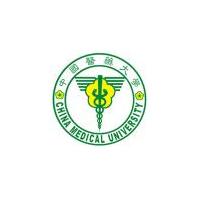Background: In first-line treatment of Helicobacter pylori, we have previously shown that the eradication frequency was 83·7% (95% CI 80·4-86·6) for triple therapy for 14 days (T14; lansoprazole 30 mg, amoxicillin 1 g, and clarithromycin 500 mg, all given twice daily), 85·9% (82·7-88·6) for concomitant therapy for 10 days (C10; lansoprazole 30 mg, amoxicillin 1 g, clarithromycin 500 mg, and metronidazole 500 mg, all given twice daily), and 90·4% (87·6-92·6) for bismuth quadruple therapy for 10 days (BQ10; bismuth tripotassium dicitrate 300 mg four times a day, lansoprazole 30 mg twice daily, tetracycline 500 mg four times a day, and metronidazole 500 mg three times a day). In this follow-up study, we assess short-term and long-term effects of these therapies on the gut microbiota, antibiotic resistance, and metabolic parameters.
Methods: This was a multicentre, open-label, randomised trial done at nine medical centres in Taiwan. Adult patients (>20 years) with documented H pylori infection were randomly assigned (1:1:1, with block sizes of six) to receive T14, C10, or BQ10. We assessed long-term outcomes (reinfection frequency, changes in the gut microbiota, antibiotic resistance, and metabolic parameters) in patients with available data, excluding all protocol violators and those with unknown post-treatment H pylori status. Faecal samples were collected before treatment and 2 weeks, 2 months, and at least 1 year after eradication therapy. Amplification of the V3 and V4 hypervariable regions of the 16S rRNA was done followed by high-throughput sequencing. Susceptibility testing for faecal Escherichia coli and Klebsiella pneumoniae was done. This trial is complete and registered with ClinicalTrials.gov, NCT01906879.
Findings: Between July 17, 2013, and April 20, 2016, 1620 participants were randomly assigned to the three treatment groups (540 [33%] per group). 1214 (75%) attended 1-year follow-up and are included in this analysis. Compared with baseline, alpha diversity was significantly reduced 2 weeks after T14 (p=0·0002), C10 (p<0·0001), and BQ10 (p<0·0001) treatment. Beta diversity was also significantly altered 2 weeks after T14 (p=0·0010), C10 (p=0·0001), and BQ10 (p=0·0001). Alpha diversity and beta diversity were restored at week 8 (p=0·14 and p=0·918, respectively) and 1 year (p=0·14 and p=0·918) after T14, but were not fully recovered at week 8 and after 1 year in patients treated with C10 (p=0·0001 and p=0·013 at week 8; p=0·019 and p=0·064 at 1 year) and BQ10 (p<0·0001 and p=0·0002; p=0·001 and p=0·029). A transient increase at week 2 after T14 and C10 of the resistance rates of E coli to ampicillin-sulbactam (12% [15/127] to 66% [38/58] for T14, 7% [10/135] to 64% [28/44] for C10), cefazolin (13% [16/127] to 43% [25/58] for T14, 10% [13/135] to 41% [18/44] for C10), cefmetazole (8% [10/127] to 26% [15/58] for T14, 4% [5/135] to 18% [8/44] for C10), levofloxacin (8% [10/127] to 35% [20/58] for T14, 7% [10/135] to 32% [14/44] for C10), gentamicin (13% [19/146] to 47% [27/58] for T14, 15% [22/149] to 45% [20/44] for C10), and trimethoprim-sulfamethoxazole (33% [48/146] to 86% [50/58] for T14, 28% [42/148] to 86% [38/44] for C10; p<0·05 in paired samples in the above analyses) returned to basal state at week 8 and after 1 year. Although bodyweight and body-mass index slightly increased, there were significant improvements in metabolic parameters, with a decrease in insulin resistance, triglycerides, and LDL and an increase in HDL. Overall, there was no significant change in the prevalence of metabolic syndrome at week 8 and 1 year after T14, C10, and BQ10.
Interpretation: Eradication of H pylori infection has minimal disruption of the microbiota, no effect on antibiotic resistance of E coli, and some positive effects on metabolic parameters. Collectively, these results lend support to the long-term safety of H pylori eradication therapy.
Data and Resources
| Field | Value |
|---|---|
| Publisher | |
| Modified | 2020-10-29 |
| Release Date | 2020-10-29 |
| Identifier | 35a4418f-3ddc-45e1-b7c4-c6f74080c31f |
| License | License Not Specified |
| Public Access Level | Public |
